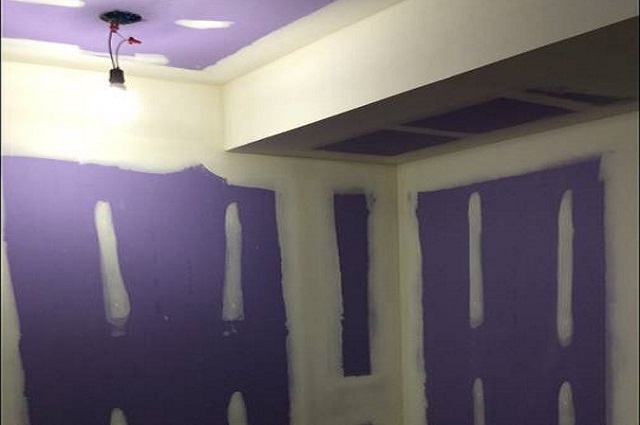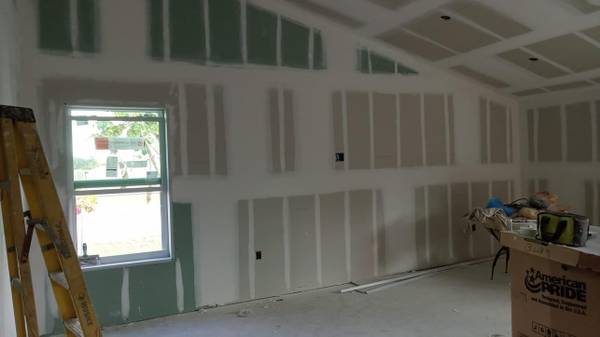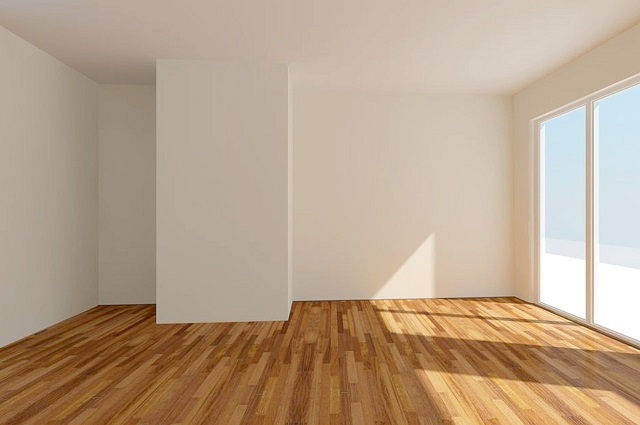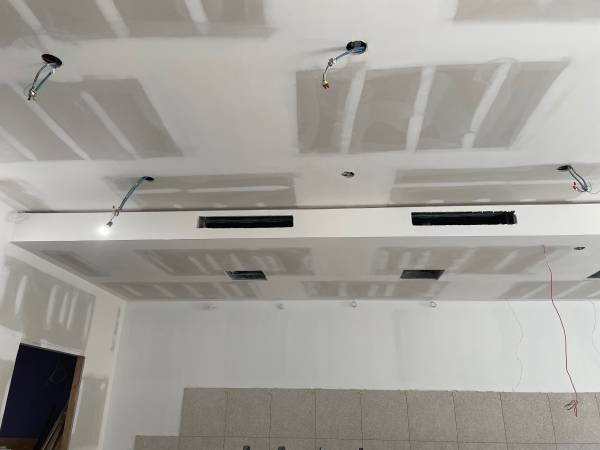Drywall taping with joint compound

Table of Contents
Preparation of the Surface for Drywall taping
When it comes to drywall taping and finishing, the initial step involves diligently preparing the surface before any joint compound can be applied. This crucial stage sets the foundation for a smooth and seamless finish. To begin, remove any dust, dirt, or debris from the wall or ceiling using a dry cloth or vacuum cleaner. Ensure that the surface is clean and free of any imperfections such as protruding nails or screws. For optimal results, it is advisable to lightly sand the area to create a better bond for the joint compound.
Once the surface is cleaned and prepped, inspect for any cracks, holes, or gaps that may need to be patched before proceeding with drywall taping and finishing. Use a joint compound or spackling paste to fill in any imperfections, making sure to feather out the edges for a smooth transition. Additionally, check the drywall for any signs of water damage or mold, addressing these issues promptly to prevent further problems during the taping and finishing process. By paying attention to detail during the preparation stage, you pave the way for a professional-looking result in your drywall project.
Selecting the Right Tools and Materials
When embarking on a drywall taping and finishing project, it is vital to choose the correct tools and materials to ensure a smooth and professional outcome. Essential tools such as a taping knife, mud pan, joint compound, sandpaper, and a drywall tape measure should be selected with care to facilitate a seamless application process. The quality of the materials picked directly impacts the final result, so it is advisable to opt for reputable brands known for their durability and ease of use.
Additionally, considering the project scale and complexity is crucial in determining the quantity of tools and materials required. Adequate preparation in this aspect ensures a seamless workflow without interruptions due to shortages. Investing in high-quality tools and materials might lead to a slight inclination in the budget; however, the enhanced efficiency and superior final finish that ensue far outweigh the initial investment.
Mixing the Joint Compound Properly
To mix joint compound properly for drywall taping and finishing, start by pouring the appropriate amount of dry compound powder into a clean bucket. Slowly add water while stirring continuously with a mixing paddle. The consistency should be smooth and free of lumps, resembling thick pancake batter. It’s crucial to follow the manufacturer’s instructions regarding the water-to-compound ratio to achieve the right consistency for application.
Ensure you mix the joint compound thoroughly until it reaches a uniform texture. Avoid overmixing, as this can introduce air bubbles into the compound, leading to a less desirable finish on the drywall. Once mixed, allow the compound to sit for a few minutes to hydrate fully before applying. Properly mixed joint compound is essential for achieving seamless and professional results when taping and finishing drywall surfaces.
Applying the First Coat of Joint Compound
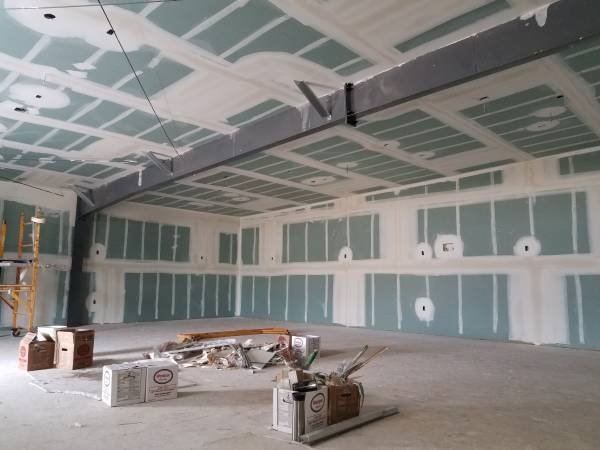
Once the surface is adequately prepared and the joint compound is mixed to the right consistency, it’s time to start applying the first coat. Begin by loading your taping knife with a generous amount of joint compound and spreading it evenly over the joint or seam. Make sure to press firmly to force the compound into the gaps, ensuring a strong bond with the drywall.
Smooth out the applied compound using long, even strokes to level it with the surrounding surface. Be cautious not to leave any excess compound on the drywall, as this will require additional sanding and can result in an uneven finish once painted. Applying the first coat is a critical step in the drywall taping and finishing process, setting the foundation for a smooth and seamless final result.
Taping and Bedding the Joints
Taping and bedding the joints is a critical step in the process of drywall taping and finishing. It involves applying joint tape to the seams where the drywall sheets meet, creating a smooth and seamless surface. The joint tape helps to reinforce the connection between the drywall panels, preventing cracks and ensuring a sturdy finish. Once the tape is applied, a layer of joint compound is carefully spread over the tape to bed it into the surface and create a flat, level finish.
Properly taping and bedding the joints is essential for achieving professional-looking results in your drywall project. The key is to ensure that the joint tape is securely embedded and that the joint compound is applied evenly and smoothly. Take your time during this step to avoid any air bubbles or wrinkles in the tape, as these can create imperfections in the final finish. A well-executed taping and bedding process sets the foundation for the rest of the drywall finishing process, so it’s worth taking the time to do it right.
• Taping and bedding joints is a critical step in drywall taping and finishing
• Joint tape reinforces connection between drywall panels
• Joint compound is spread over tape to create flat, level finish
• Proper taping and bedding essential for professional-looking results
• Ensure joint tape is securely embedded and compound applied evenly
Feathering Out the Edges of the Joint Compound
When it comes to drywall taping and finishing, a crucial step is feathering out the edges of the joint compound. This process involves blending the edges of the compound smoothly into the surrounding wall, creating a seamless finish. To achieve this, use a wide drywall knife and apply gentle pressure along the edges to feather them out gradually. This technique helps to eliminate any visible transition lines and creates a professional-looking surface.
Properly feathering out the edges of the joint compound is essential for achieving a smooth and flawless drywall finish. It requires patience and a steady hand to ensure that the edges are seamlessly integrated into the surrounding wall. Take your time during this step to feather out the edges evenly and consistently, avoiding any abrupt changes in thickness. By mastering this technique, you can enhance the overall appearance of the drywall surface and achieve professional results in your taping and finishing projects.
Sanding the Joint Compound Smooth
After applying multiple coats of joint compound during the drywall taping and finishing process, it is crucial to sand the surface smooth to achieve a seamless and professional finish. Sanding helps to level out any imperfections, bumps, or ridges left behind by the joint compound application. The goal is to create a flat and uniform surface that is ready for painting or other decorative finishes.
When sanding the joint compound smooth, it is important to use fine-grit sandpaper to avoid creating scratches or gouges in the surface. Start with a medium-grit sandpaper to remove any high spots or excess compound, then switch to a fine-grit sandpaper to achieve a smooth and polished finish. Take care to sand in a consistent manner, working in a circular motion to blend the edges and feather out any uneven areas. Make sure to wipe down the surface with a damp cloth after sanding to remove any dust or debris before proceeding with additional coats or finishing touches.
Applying Additional Coats as Needed
After the initial coat of joint compound has dried thoroughly, it is important to inspect the surface for any imperfections or areas that may require further attention. Small divots, bumps, or uneven areas should be addressed by applying additional coats of joint compound. This step is crucial in achieving a smooth and seamless finish for your drywall taping and finishing project. Remember to feather out the edges of each additional coat to ensure a gradual transition between the repaired area and the surrounding wall surface.
Depending on the size and severity of the imperfections, you may need to apply multiple coats of joint compound to achieve the desired result. It is important to allow each coat to dry completely before applying the next one. Take your time during this process to ensure that each coat is applied evenly and smoothly. Pay close attention to the edges of the repaired area to avoid creating noticeable ridges or bumps in the final finish. Following these steps will help you achieve professional-looking results in your drywall taping and finishing project.
Ensuring Proper Drying Time
Once you have applied the necessary coats of joint compound to your drywall taping and finishing project, it is crucial to allow ample time for the compound to dry completely. Rushing this step can result in a subpar finish and may lead to additional repairs down the line. Proper drying time is essential for ensuring a seamless and professional end result, so it is important not to skip this crucial stage of the process. Be patient and resist the temptation to move on to the next step until the joint compound is fully dried.
Depending on the type of joint compound used, the drying time can vary. It is recommended to refer to the manufacturer’s instructions for specific guidance on drying times. In general, joint compound can take anywhere from several hours to a full day to dry completely. Factors such as humidity levels and temperature can also affect drying times, so it is important to take these into consideration when planning your drywall taping and finishing project. Avoid the temptation to rush the drying process, as this can compromise the quality of your work.
Final Sanding and Finishing Touches
After applying the necessary coats of joint compound and allowing sufficient drying time between each application, the final step in the drywall taping and finishing process is the crucial stage of sanding. The goal of this step is to achieve a smooth and seamless surface, free of any imperfections or visible seams. Using fine-grit sandpaper or a sanding sponge, gently sand the dried joint compound to create a flush and even surface. Be mindful not to oversand, as this can lead to uneven patches or damage to the surrounding area.
Once the sanding is complete and the surface is smooth to the touch, it’s time for the finishing touches that will ensure a professional and polished end result. Inspect the entire area for any remaining imperfections, such as bumps, ridges, or visible seams. Use a joint compound to touch up any areas that require additional smoothing or blending in with the rest of the surface. After the final touch-ups, wipe down the entire surface with a damp cloth to remove any dust residue from the sanding process. This step will not only clean the surface but also allow for a better finish when it comes time to paint or apply any wall treatments.

